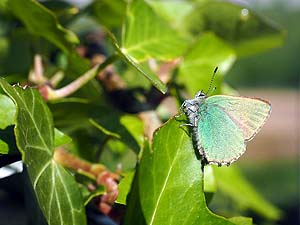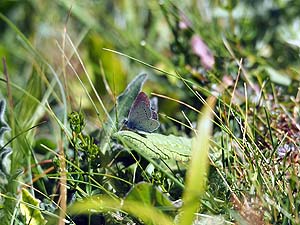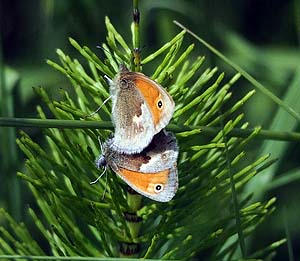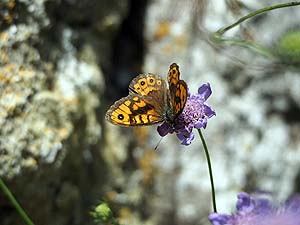Butterflies to look out for in May
Given warm and settled weather, quite a range of butterflies are likely to be on the wing in May. General information about each species can be found by clicking on the links.
.jpg) The dingy skipper (Erynnis tages) butterfly is locally common on southern downs and coasts of England. As the name suggests it is relatively dull in colour, brown with white markings, and it flies over open grassland. The caterpillars feed on horseshoe vetch and common bird’s-foot trefoil. It is a spring butterfly, but in a good year a second brood is seen in August.
The dingy skipper (Erynnis tages) butterfly is locally common on southern downs and coasts of England. As the name suggests it is relatively dull in colour, brown with white markings, and it flies over open grassland. The caterpillars feed on horseshoe vetch and common bird’s-foot trefoil. It is a spring butterfly, but in a good year a second brood is seen in August.
 The green hairstreak butterfly (Callophrys rubi) is Britain’s only green butterfly and is a bright emerald green. The adults are often seen resting on sweet bay shrubs, along the cemetery path between the eastern end of the chapel and the south-western entrance. It is widespread throughout Britain and Ireland and is on the wing from late April to early July. The caterpillars feed on common rock-rose and common bird’s-foot trefoil
The green hairstreak butterfly (Callophrys rubi) is Britain’s only green butterfly and is a bright emerald green. The adults are often seen resting on sweet bay shrubs, along the cemetery path between the eastern end of the chapel and the south-western entrance. It is widespread throughout Britain and Ireland and is on the wing from late April to early July. The caterpillars feed on common rock-rose and common bird’s-foot trefoil
 The small blue (Cupido minimus) is a national rarity and is mainly found in central south England. It is one of our smallest butterflies and is easily overlooked but wasseen throughout the western end of the cemetery. There are two generations, in mid-May to mid-June and mid-to late August. The caterpillars feed on kidney vetch.
The small blue (Cupido minimus) is a national rarity and is mainly found in central south England. It is one of our smallest butterflies and is easily overlooked but wasseen throughout the western end of the cemetery. There are two generations, in mid-May to mid-June and mid-to late August. The caterpillars feed on kidney vetch.
 The small heath (Coenonympha pamphilus) is a declining species found in low numbers in most patches of dry grassland throughout Britain. There are usually two generations and occasionally a third. The caterpillars feed on a range of wild grasses including meadow-grasses and fescues.
The small heath (Coenonympha pamphilus) is a declining species found in low numbers in most patches of dry grassland throughout Britain. There are usually two generations and occasionally a third. The caterpillars feed on a range of wild grasses including meadow-grasses and fescues.
 The wall (Lasiommata megera) butterfly has undergone a contraction of its range in recent years but is still widely distributed in dry grasslands near coasts. There are two generations: late April to early June and July to early September. The caterpillars feed on a range of wild grasses.
The wall (Lasiommata megera) butterfly has undergone a contraction of its range in recent years but is still widely distributed in dry grasslands near coasts. There are two generations: late April to early June and July to early September. The caterpillars feed on a range of wild grasses.
